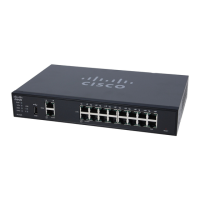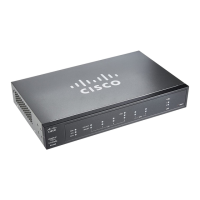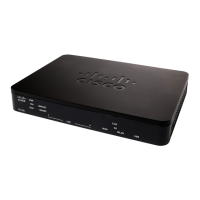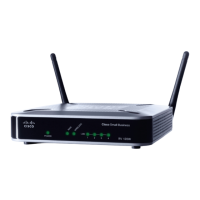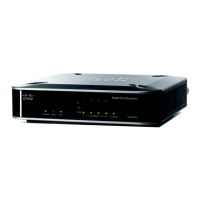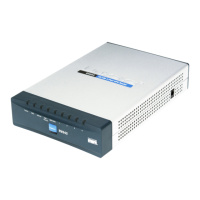Setup
Advanced Routing
42 Cisco RV320/RV325 Administration Guide
3
(VLSM). RIPv1 also lacks support for router authentication, making it
vulnerable to attacks. RIPv2 carries a subnet mask and supports password
authentication security.
• Transmit RIP versions—Select the RIP protocol for transmitting network
data: None, RIPv1, RIPv2 - Broadcast, or RIPv2 - Multicast.
RIPv2 - Broadcast (recommended) broadcasts data in the entire subnet.
RIPv2 - Multicast sends data to multicast addresses. RIPv2 - Multicast also
helps to avoid unnecessary load by multicasting routing tables to adjacent
routers rather than broadcasting to the entire network.
STEP 3 Click Save.
Configuring IPv6 Dynamic Routing
The IPv6 tab is available if you enabled Dual-Stack IP on the Setup > Network
page.
To enable RIPng, check the RIPng box.
Configuring Static Routing
Static routing can be configured for IPv4 or IPv6. These are routes that do not age
out of the routing table. You can enter up to 30 routes.
To configure a static route, click Add or select an entry and click Edit:
• Destination IP—Subnetwork address of the remote LAN segment. For a
Class C IP domain, the network address is the first three fields of the
Destination LAN IP; the last field should be 0.
• Subnet Mask (IPv4 only)—Subnetwork mask used on the destination LAN
IP domain. For Class C IP domains, the subnet mask is typically
255.255.255.0.
• Prefix Length (IPv6 only)—IPv6 prefix length.
• Default Gateway—IP address of the router of last resort.
• Hop Count—Maximum number of nodes or hops (the maximum is 15 hops)
that a packet passes through before being discarded. A node is any device
on the network, such as a switch or router.
• Interface—Interface to use for this route.
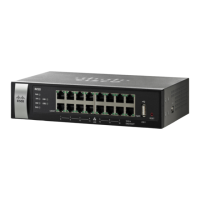
